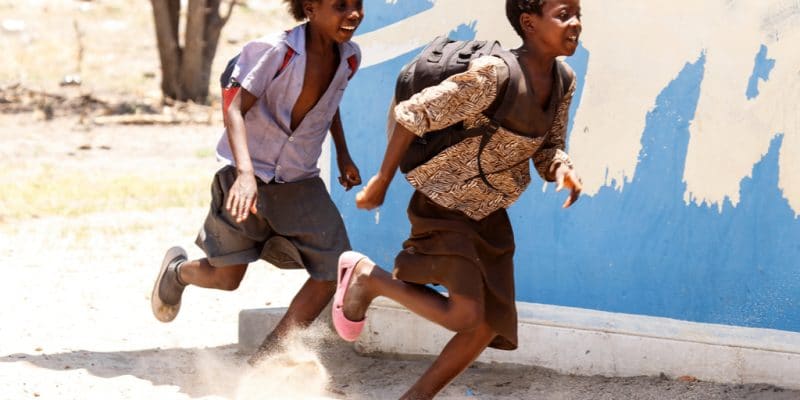The solar bag distribution programme for Botswana students was officially launched on August 7, 2019 at Ramonaka Primary School in southern Botswana. This initiative, led by two local organisations, aims to provide electricity to young learners in order to improve their academic performance.
As of next school year, Botswana children will be going to school with solar-powered backpacks. This project was initiated by two Botswana organisations whose aim is to improve access to education in this West African country. The Botswana Foundation of the First National Bank (FNB) and the Bostwana Power Corporation (BPC) worked on this project in collaboration with the Ministry of Local Government and Rural Development. The initiative was officially launched in early August 2019 at Ramonaka Primary School, located in the south of the country, in the Kgatlend district. In several villages and towns in Botswana, the action is already underway.
The school backpack project has two components. On the one hand, the students in the upper classes each received a backpack equipped with a lamp. It is recharged by solar energy, when children go to school and in the evening it serves as lighting for young learners. In addition, school supplies will be provided to students in lower grades.
Solar energy to boost academic results
According to the Deputy Minister of Local Government and Rural Development, Botlogile Tshireletso (quoted by the newspaper Afrik7.com), “the main objective of the initiative is to provide primary school children in remote areas with solar backpacks to support their learning at home.” In Botswana, electricity is often scarce in rural areas. Many children living in these communities are forced to travel miles to get to their school. This exercise seems even more difficult when they return home in the evening and cannot revise their lessons or do homework on time because of the lack of electricity.
The rate of access to electricity was 62.8 per cent in 2017, according to World Bank estimates. At the same time, this country produced only 60% of the total energy consumed in the country. The deficit was covered by imports from South Africa and Zambia. In addition, 29% of the available electricity comes from the Morupule B coal-fired power plant, which has a production capacity of 600 MW.
Luchelle Feukeng







